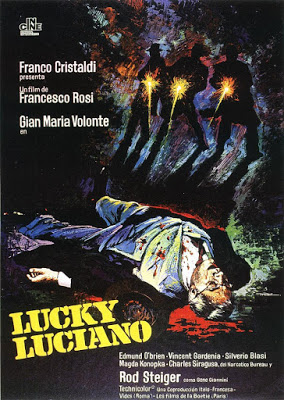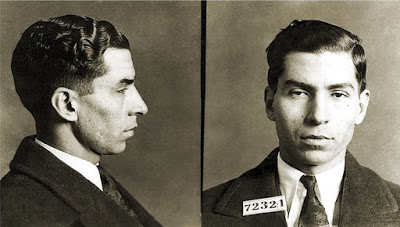Director: Francesco Rosi
Year: 1973
Rating: 6.0
I love watching films about the old real-life mob figures and nobody was
in the middle of it all like Lucky Luciano was. He was involved in one way
or another with all the names that still resound decades later. Arnold Rothstein
was his partner at one time as was Meyer Lansky. Joe Bonanno, Carlo Gambini,
Tommy Lucchese, Legs Diamond. Mad Dog Coll, Dutch Schultz, Albert Anastasia,
Frank Costello, Vito Genovese and Bugsy Siegel all fell within his orbit.
In fact, in the opening scene of the film Luciano excuses himself to go to
the bathroom in order to give four gunmen an open shot at his boss Joe Masseria
in a restaurant. Though not said in the film, one of the gunmen was Siegel
who was a friend of Luciano’s – until Luciano agreed that Siegel had to be
eliminated years later for his dealings in Las Vegas.
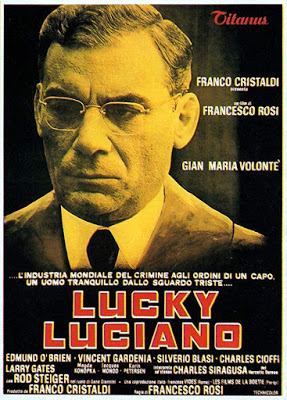
But Luciano was more than just a thug – though a thug he was – he became
the top guy in the Cosa Nostra and organized the Five Families and the Commission
as the body to oversee them. In 1936 he was convicted for running brothels
– a lot of them – and was sentenced to 30 years in jail. But in 1946 he was
pardoned by Governor Thomas Dewey for his services in WWII which is a pretty
interesting story in itself in that Luciano was in jail. But as part of his
pardon Luciano had to leave the USA and go to Italy. Lucky Italy but in 1946
Italy was in no position to say no. That is where this film begins.
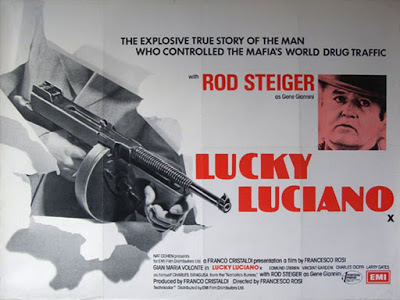
This is an Italian production with Francesco Rosi (Christ Stopped at Eboli)
directing but it manages to clumsily shoehorn some American actors in - Edmund
O’Brien, Vincent Gardenia, Rod Steiger and Charles Cioffi. But it is almost
as if it was an after thought to include them as their roles in the film
felt nearly unconnected to the Lucky Luciano story. This creates a jagged
narrative as it jumps all over in time and point of view. The viewer is taken
out of Luciano’s narrative for a 20-minute stretch to relate the story of
the GI’s in Italy and how the Mafia used them. Or with Steiger the film moves
into a side story of how the FBI tries to use him as an informer on Luciano.
Now these parts are actually interesting – especially in how the Mafia co-operated
with the army in Italy but are kind of superfluous to the story. The story
of Luciano was interesting enough.
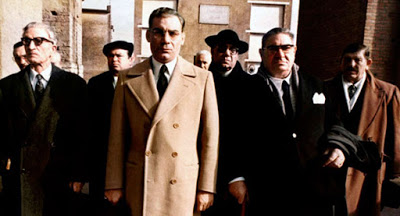
Luciano as portrayed by Italian actor Gian Maria Volante (lots of Spaghetti
Westerns including For a Few Dollars More and A Fistful of Dollars) is sleek
and calm – just needing to whisper in an ear to have someone killed. As he
boards the boat to be deported there are a few flashbacks as he moved up
the Mafia food chain – one dead body at a time – culminating in what was
termed The Night of the Sicilian Vespers in which Luciano and company wiped
out a number of Mafia bosses all over America and united the mob. The good
old days.
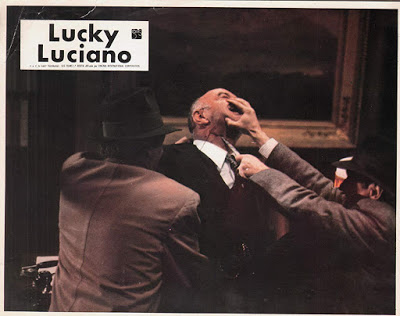
In Italy Luciano settles down in Naples and continues his control of the
mob in America as well as opening up and monopolizing the drug trade. In
truth though this all seems an odd choice by the filmmakers as Luciano’s
life was much more interesting pre-deportation than it was after where not
very much dramatic actually happens. Maybe that is why they had to go into
these side stories – to fill up time. I kept waiting for Luciano to get whacked
but in fact he lives till 1962 when a heart attack got him.
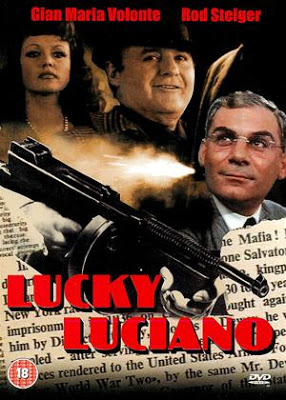
Still the film seems to stick to the truth for the most part but leaves out
that back in America there was a constant fight to take over Luciano’s territory
by Genovese and Vincent the Chin Gigante. As a personal note – when I was
working in the early 1980’s in NYC there was this attractive woman working
in my office that I was a bit interested in – till someone told me that the
name she was using was not her real name and that she was the niece of one
of the Genovese family. That was the end of that.
